By Carol Tannenhauser
A new state-of-the-art skatepark — with bowls, rails and greenery — will replace the current one at West 108th street and Riverside Park. Construction is expected to begin this fall and last about a year. The cost will be $1.8 million: $1,150,000 from Councilmember Mark Levine (although it’s not in his district!); $350,000 from Councilmember Helen Rosenthal; and $300,000 from Manhattan Borough President Gale Brewer. When completed, the new skatepark will bring skateboarding on the UWS into the 21st Century, the designers say.

The plan for the new park. Click to enlarge.
“We’re looking at contemporary materials and conditions that skaters are now skating,” said the designer, Tyler Silvestro of W Architecture and Landscape Architecture, who presented the proposed design at a Community Board 7 Parks and Environment Committee meeting on May 16th.
“It’s no longer half-pipes; there’s a lot more free-flowing, transitional bowls,” he said. “We’re working with a company called California Skateparks. They have a number of skateparks in NYC, including the now-famous park in Tribeca called Pier 62. That’s where the kids are and that’s where they want to be. We see this as an opportunity to keep some of that traffic here.”
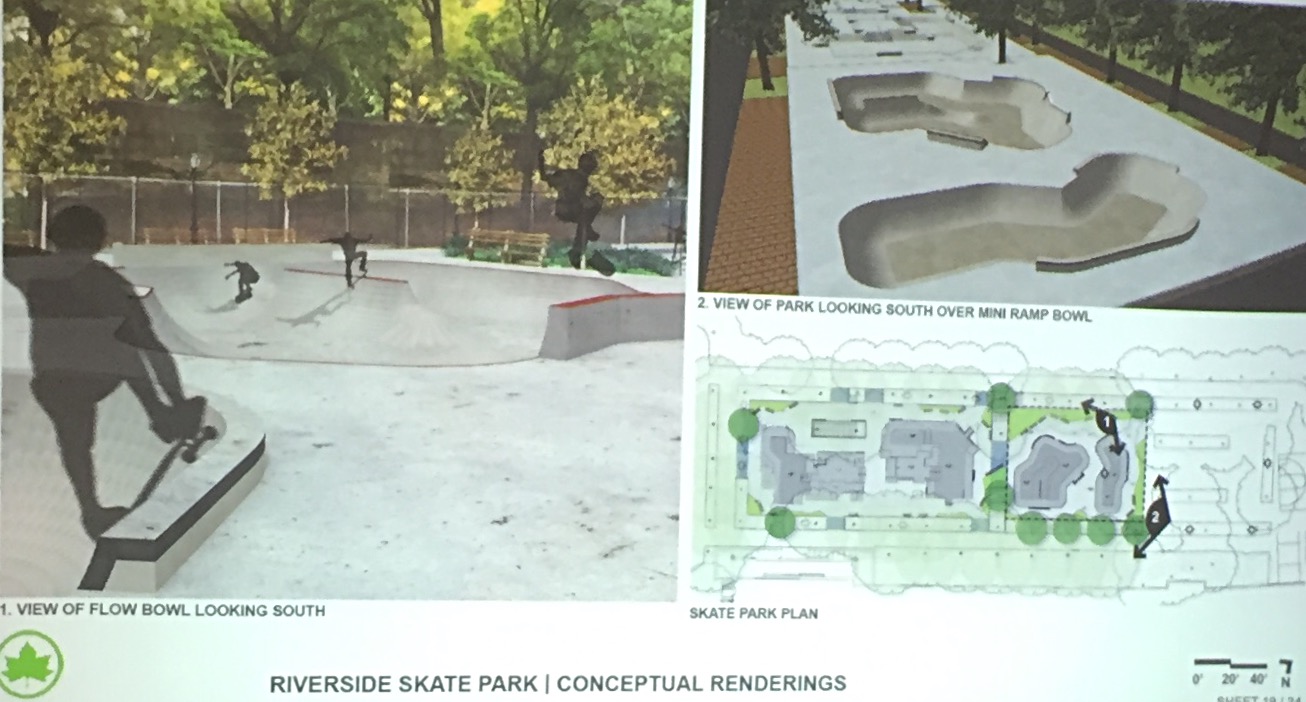
Conceptual renderings. Click to enlarge.
The old Riverside Park skatepark was built in 1995, largely, as a result of the efforts of NYC skateboarding legend and UWS local, Andy Kessler, who grew up on West 71st street. Kessler died in 2009, at the age of 48.
“He skated all over the Upper West Side, where [he] grew up,” wrote The New York Times, in his obituary. “Seth Affoumado, who skated with Mr. Kessler when almost nobody else was pursuing the sport, said…Mr. Kessler was ‘the catalyst for skateboarding in New York City.’
“Mr. Kessler long nurtured an ambition to build a park for skateboarders and roller-bladers, and in the mid-1990s he proposed the idea of building one in Riverside Park, near where he grew up. The New York City parks department accepted the idea, and Mr. Kessler recruited a group of disadvantaged youths to build it.”
Just a few years ago, some city skateboarders rehabbed the park’s ramps, pipes and other obstacles.
“Andy was very big in the children’s skating scene,” Silvestro said. “He wanted children not to have to hang out in the streets or get chased off places like Columbus Circle, where they were constantly being harassed by authority. Andy gave them an opportunity to help construct something that was going to last. Looking at the history of the site was very instrumental and helpful in our process. Andy’s mark on the NYC skateboarding scene is monumental. We know this by the community meetings we’ve held, heavily attended by his friends, guys he grew up with and skated with, who were there to support him and make suggestions on his behalf.”
Also considered in the design was the NYC parks department “Parks Without Borders” initiative to make parks “more open, welcoming, and beautiful by focusing on improving entrances, edges, and park-adjacent spaces.” Whereas the old skatepark is completely fenced, often locked, and requires an attendant, about two-thirds of the new park will be un-fenced and “lower in scale,” Silvestro said, “still challenging, but not too aggressive, more inviting to a diverse set of riders and the local community.”
Not so the northern third of the new skatepark, which will be fenced and attended, and will require helmets and knee and elbow pads, which speaks to the height – or rather depth – of the bowls, which, like swimming pools, are made of concrete.
“There are skatepark regulations that state when an element is a certain height or dimension it must be fenced in for security and safety purposes,” Silvestro said.
He emphasized that the new park will be open regular and generous hours, Thursday through Monday, 11 am – 7 pm, to accommodate skaters of all ages.
“It’s important to have all generations of skaters involved,” he said. “Some skaters come to learn and others to encourage the youth and teach as well. Many of the supporters are skate advocates and know how to be very gentle with the next generation of skaters.”
The design also respects the character of Riverside Park.
“We wanted to place new plantings so the park is continuously framed the way it is now with the original tree species planted in the 1930’s,” Silvestro said. “The linear arrangement of pin oaks will be restored, with new trees replacing fallen or unhealthy ones. Riverside Park is not a contemporary park, but the skatepark is, so we’re trying to strike a balance between two.”
The old skatepark, aka “Andy Kessler Memorial Skatepark,” will remain open through the summer. Go to NYC.gov/parks for hours and regulations.
Photos courtesy of the architect.



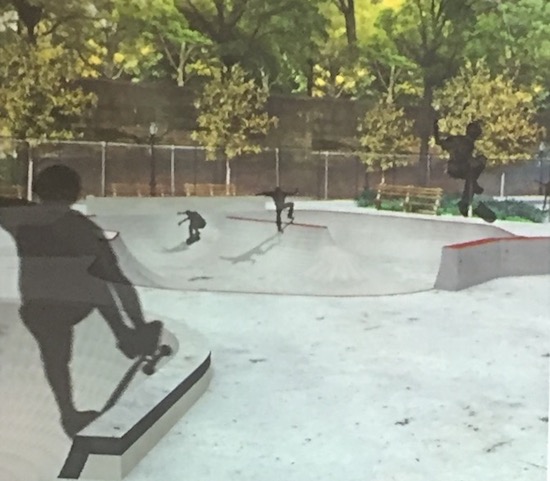
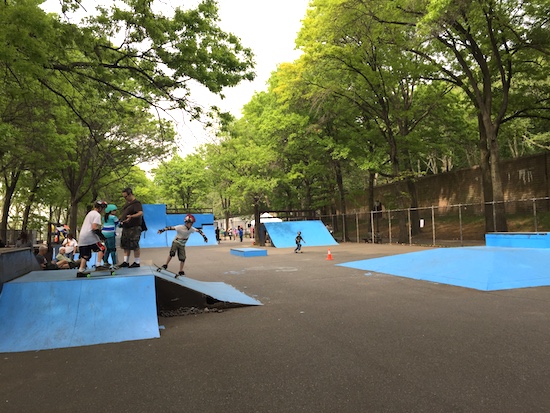
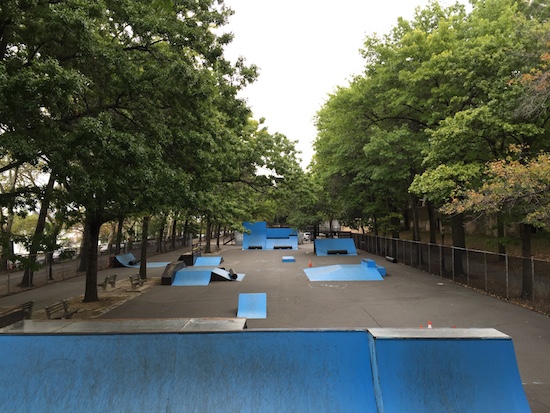



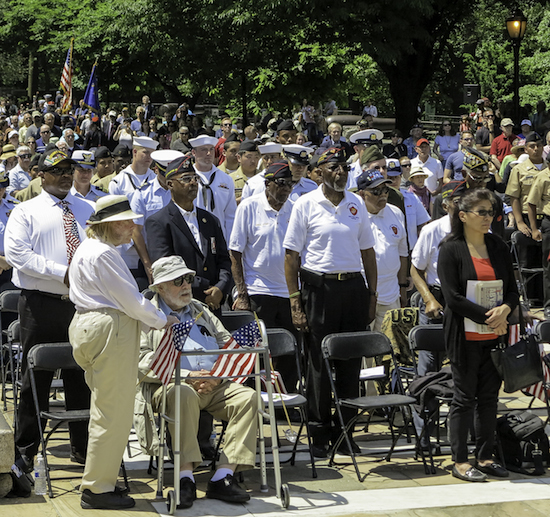

No surprise here that they’re getting rid of the half-pipes. They made me get rid of my full pipe years ago when Comrade Bloomberg instituted the smoking ban. (I guess he never heard of the 1st amendment)
At least this skate park will keep these noisy kids out of the restaurants. I’m tired of them ruining my meals with their loud talking and laughter.
Back in my day our pipes were full and we didn’t need wheels on our boards to have a good time. We would just flip them in the streets.
The city has been in the dumpster ever since they let LaGuardia impose his liberal ideals on this once great city.
Troll Grade: B
Not bad. Does a nice job skewering the “in my day” posts.
Would have been nice if it was a little more current with references, or it evoked the undercurrent of racism and classism usually present in these kind of comments.
Very cool!
Great, something else for the kids. How about something like shuffleboard for all the seniors up here? Maybe a little sweating to the oldies would be nice.
Certainly, this planned project sounds appealing and exciting. Especially the part about two-thirds of the area being unfenced and available for use at all times. That, at least from a purely practical and utilitarian perspective, would seem to me to be the greatest benefit to the public of the proposed renovation.
But to spend $1.8 million on a new designer skate park? When the existing facility, by all appearances, is still in perfectly fine, fully-functional and safe condition? And when the same cannot be said for many of the other facilities, structures and areas within Riverside Park (let alone the rest of the City), where disrepair and safety hazards abound?
A year ago, West Side Rag reported on the condition of the stairs that lead to the “101st Street Soccer Field”: loose, crumbling, full of gaping holes. This is an appalling danger that has yet to be repaired (and took until late last June just to fence-off).
Other examples that I’ve observed include:
–potholes (paved slope from 103rd staircase to lower-level of park; pavement along the railing at river’s edge)
–loose steps (stairway just beyond 95th St. underpass; eastern edge of 103rd St. promenade overlooking basketball court)
–severely broken-up pavement along ledge at uppermost-level of park (caused me to trip and nearly fall last year)
I’m sure others could cite additional ones.
Priorities. Where are the City’s, in spending what are limited, already-strained, taxpayer dollars?
How, in light of the conditions I point-out above, can this expenditure of nearly two million be justified?
I hope these questions will be asked of the elected representatives named in the article:Mark Levine; Helen Rosenthal; Gale Brewer; and anyone else who bears responsibility for this decision. I hope all of them will be challenged by my fellow citizens and taxpayers.
—————————
Doesn’t New York State and/or City law require that all persons under fourteen-years-of-age wear a helmet at all times and all places while skateboarding? (Not that drawing the line at 14, which we do not consider old enough to consume alcohol or tobacco, drive, vote, etc., makes any sense to me…)
And doesn’t common sense extend this requirement to all people–irrespective of age– whenever skateboarding, skating, scootering or bicycling? Yes, wearing a helmet may be more critical under certain conditions than under others but still…
Why are you and so many others fixated on the helmet issue? It’s difficult to not see it come across as obstructionism instead of a sincere sentiment for the wellfare of others. The same happens when the topic of bikes come up. The vitriol against bicyclists just bursting at the seams with every comment, immediately to be followed by the predictable nugget of wisdom “…and they should be wearing their helmeeeets!” It’s hard to take the advice as well intentioned when the sentiment expressed just moments prior is one of contempt and disdain.
The point I’m trying to make is, feel free to dislike others because of whatever reason you can come up with. But own up to it and don’t fake being concerned for them. We know you’re not!
Let the past go , , , “it’s over Johnny.” You’re talking about 75+ years ago. Much to blame since then. If you want to go that far back, add another 75 years and point towards “Boss” Tweed.
Totally agree with you, ‘Independent.’
Whose palms were greased heavily to get this passed…. $1.8 million for a skate park? When Central Park’s tennis courts are so deteriorated and used to the max daily by 60- 80 people each hour? Unbelievable. A complete waste of money.
There are plenty of nice tennis courts in the UWS. You have two different sets in Riverside, and quite a bit more in Central Park. The current skatepark is falling apart, and requires supervision, making it illegal to skate 70% of the year. This is a great way use of funds for the kids in UWS.
Wendy, would you consider it also a waste of money if the $1.8M was invested in the tennis courts? Why isn’t a skate park worthy of the investment?
Dope
Okay, a few things come up here.
1. That skatepark is *not* perfectly fine. It has looked the exact same way for as long as I can remember, which is much longer than I’ve actually been skating. Between rain, the very snow-y winter we’ve had and all the winters previous, do you really think all this wood is safe and to code? A concrete revision is much more practical.
2. It’s never open. Never. The times it is open there are obstacles that are still blocked. But ya know, we’ll make sure to show up to this dilapidated park on the third Wednesday of watch summer month that it’s actually open.
3. As someone else posed earlier, a Tennis court is more worthy of repair than a skatepark? Why is that exactly? Skateboarding is likely the world’s fastest expanding sport/activity. Not even taking homegrown companies into account, the big boys (Nike, Adidas, Reebok, Red Bull, etc) have been pumping ridiculous amounts of money into skating. It’s the wave of the future, get used to it.
This park is gonna see so much activity it won’t be able to accommodate everyone who wants to go. Besides, all you people complain incessantly about how skaters in the streets. This is one less thing to worry about on the Upper West Side
I agree with ERRR: the current park is not fine. I’ve skated it with my sons. The design is barely integrated, and the structures are quickly deteriorating.
I work for an organization that helps at-risk adolescents, and this future park is a great alternative for them being out and about with no structure around them.
Then perhaps they can reach into their big pockets and pump-up the money for this new skate park. (Perhaps in return for naming and other advertising rights for the facility.)
(Alternatively, perhaps if enough individuals or even just one or two who are sufficiently wealthy desire this project enough, they can fund it.)
Otherwise, I fail to see what bearing the money that the “big boys” (corporations) spend skating has on the question that has been raised: Whether, given all of the other things in dire need of funding, an expenditure of nearly two million on a new skate park can be considered a legitimate use of limited and already-strained taxpayer dollars.
But then won’t it be in danger of becoming so crowded that no one will go there anymore?
(To paraphrase Yogi Berra)
To follow-up on my original post, responding to comments that have been made since:
First, concerning the condition of the existing skate park, I had written that, “by all appearances, [it] is still in perfectly fine, fully-functional and safe condition”. At least two separate posters have now disputed that characterization, claiming that the current facility is actually worn-out and, as a result, may not be that safe after all. I will concede that, for all I know, said posters may be correct. Instead of writing, “by all appearances” as I did, I probably would have done better to have written something like, “as far as I can see”, adding that I could be wrong.
Nonetheless, I again point-to the specific examples of long-standing safety hazards that I had cited in my post– none of which have actually been addressed by any of the posters who have commented thus far (as of this writing). I ask again: Can an expenditure of nearly two million taxpayer dollars for a new skate park be justified as long as loose and crumbling stairs and potholes that pose real tripping hazards remain? Shouldn’t those take priority over all else?
If the present condition of the existing skate park is, in fact, less-than adequately safe, then wouldn’t the prudent and responsible course of action be to first, before anything else, close it entirely? Then, remove (or at least greatly reduce) all hazardous conditions such as the ones I cited and then (and only then), consider the options for renovation and re-opening of the skate park. I would say the same thing about tennis courts or any other type of recreational facilities.
Despite what seems to have been implied, I never so much as suggested— let alone declared— that there was anything inherently less-than-legitimate or worthy about the idea of a new skate park. Quite the contrary, actually. My entire argument can probably be summed-up in one word: Priorities. How many of us can afford everything we may want or even need? We prioritize our spending, securing what is most needed first and only then, if there is money remaining, indulging in lesser needs and luxuries. Why should the City (or the State or the Nation) be any different when it comes to spending the taxpayer’s money?